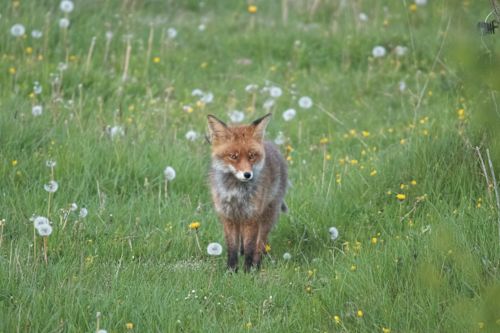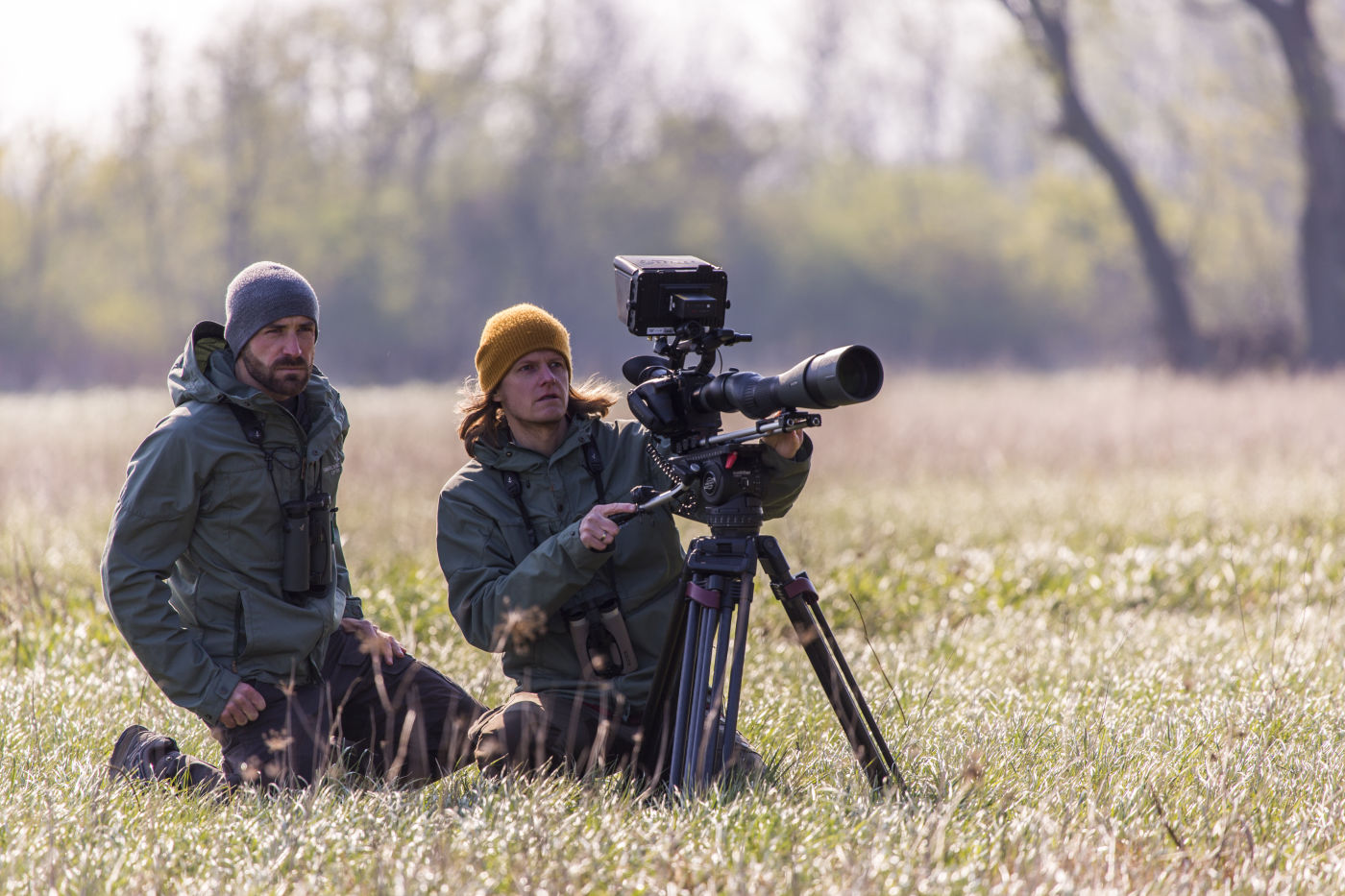They survived the harsh winter, but it has sapped the kestrels’ strength. There’s no time for a breather yet, as they’re now entering the breeding season. The search for food for their growing chicks is arduous, erratic weather conditions endanger the survival of the brood, and the family’s luck takes one dramatic turn after another.
The kestrels’ day-to-day fight simply to survive is relentless and yet fascinating – and it is often happening where you least expect it: right in the city center, perhaps even in your neighborhood.
Wildlife filmmaker Mario Kreuzer shows that it can be worthwhile taking a moment from your everyday business to just look up and watch these birds. He and ornithologist Leander Khil have taken a closer look at Common Kestrels for a movie project.
They opted to head to Vienna. Two breeding pairs in the unique surroundings of the city on the Danube play the leading roles in the TV documentary "Turmfalken – Unsichtbare Nachbarn" [Kestrels at Close Quarters].
With a great deal of patience and respect for the birds, the small team filmed predominantly using SWAROVSKI OPTIK digiscoping equipment to enable them to maintain the necessary distance and deliver an authentic experience. The result is that their documentary not only reflects life in all its beauty and brutality, but also surprises even bird experts with its astonishing discoveries.
In this interview, Mario Kreuzer explains how challenging wildlife movies can be made using digiscoping and recalls the situations in which the behavior of the kestrels deviated unexpectedly from the script.
How did you come up with the idea of filming a documentary about such an “obvious” bird as the Common Kestrel?
Mario Kreuzer: I knew I wanted to make a documentary about a bird. Leander Khil and I then settled on kestrels fairly quickly, because we discovered a certain connection with them.
A regional connection?
Mario Kreuzer: I’d call it more of an urban connection. If you want to see these birds, you don’t necessarily need to head to their original home in the mountains. Kestrels are now living almost on our doorsteps, but many of us don’t notice them because city-dwellers are simply not aware of them. However, their interest can quickly be awakened once they get the chance to actually observe these predators.
How do you tell the story of the kestrels?
Mario Kreuzer: Essentially, we follow two breeding pairs in Vienna. One pair nested on a pediment, taking shelter behind the coat of arms of the Imperial Royal Austro-Hungarian monarchy, the other on a window box with relatively little protection from the weather. We compare the two broods, their choice of nest location, their failures, and their successes. We also documented kestrels in spectacular locations in Carinthia, such as the region surrounding the Grossglockner, the Wörthersee lake, the mountainous Seewinkel landscape, and other locations throughout Austria.
So, the kestrel breeding season is the key focus of the film?
Mario Kreuzer: Yes. And that’s despite the fact that we were initially concerned it might be too dull. But the exact opposite was the case. It became the central theme because so many other aspects didn’t go according to previous scientific assumptions. For example, one of the breeding pairs fed its chicks a European ground squirrel that can only be found on the outskirts of the city. Nobody knew that the birds flew so far to hunt.
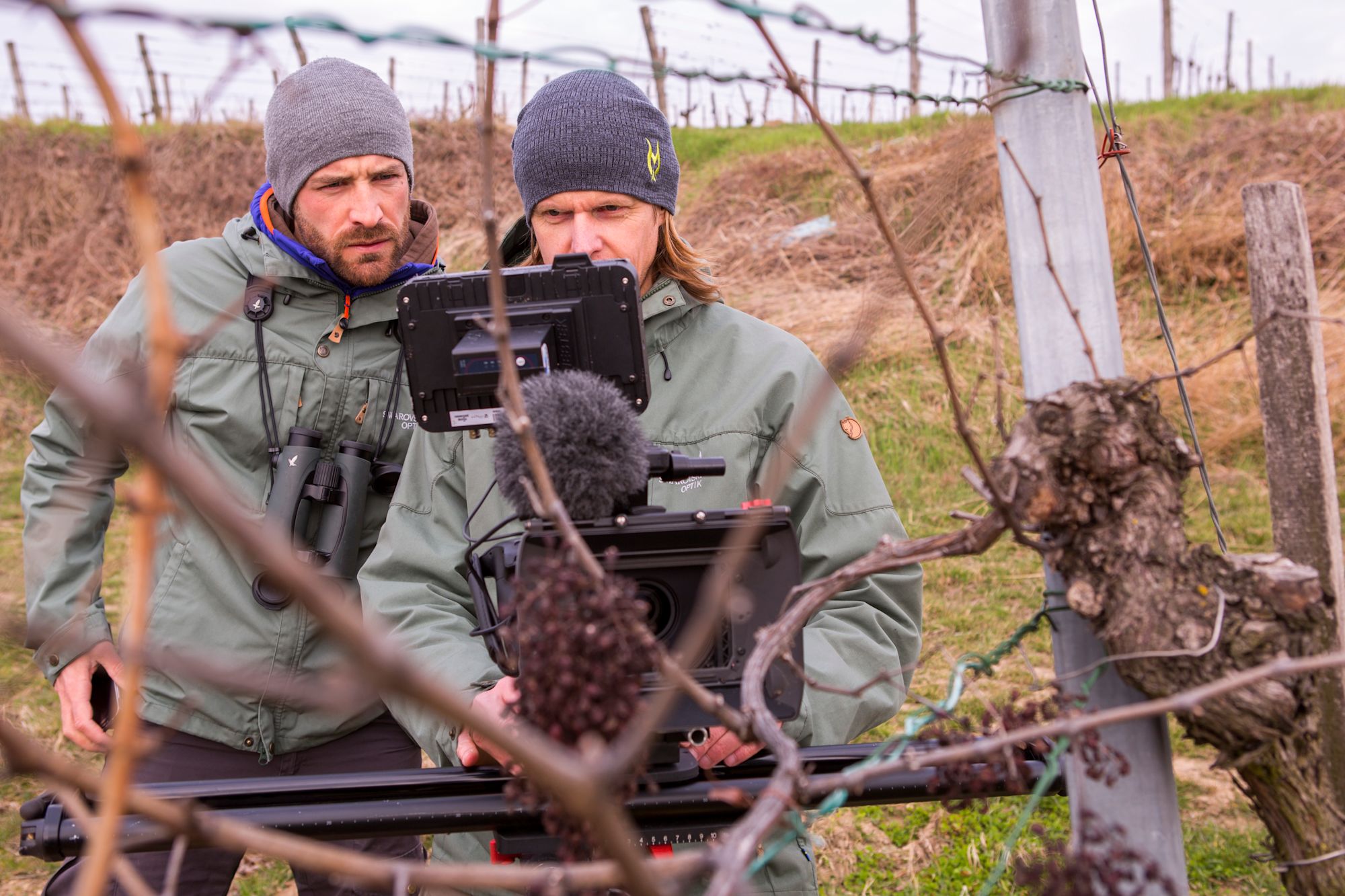
What was the biggest cinematographic challenge you encountered in this project?
Mario Kreuzer: The greatest difficulty we encountered when making this film was that the behavior of the kestrels often diverted significantly from the script. As one of the key scenes of the film, we wanted to show how the male feeds the brooding female. Generally, that happens around five times a day. However, with one of the breeding pairs, the male went more than a day without feeding the female. Those were situations that nobody had anticipated. The female was uttering loud cries of hunger and passersby couldn’t figure out where the sound was coming from. Some even thought it was a small child calling for help. Filming this scene required a lot of patience. But it is precisely these moments that make the breeding process so enthralling.
How long did it take you to film this difficult scene?
Mario Kreuzer: We often waited for days in case something happened that we could film. One of the key scenes is the “mouse handover,” in which the male flies into the nest with a mouse to hand it over to the female – a kind of bridal gift. His motive is to make the nest site and himself as attractive as possible to the female, but also to show that he can provide food for her – which of course he then failed to do. We spent days filming from the building opposite, just waiting. This scene was extremely unlikely to happen for a second time in this form at the same site.
Does your documentary also contain scenes that have never been seen before?
Mario Kreuzer: Yes, absolutely. But for us, it’s not just about the big picture, it’s about the stories. That’s why we invested most of our time – 30 days of filming – on the set with the two breeding pairs in the city. And I think we have managed to bring the audience right up close to these birds and the sequences are totally self-explanatory and work even without the voice-over from the speaker.
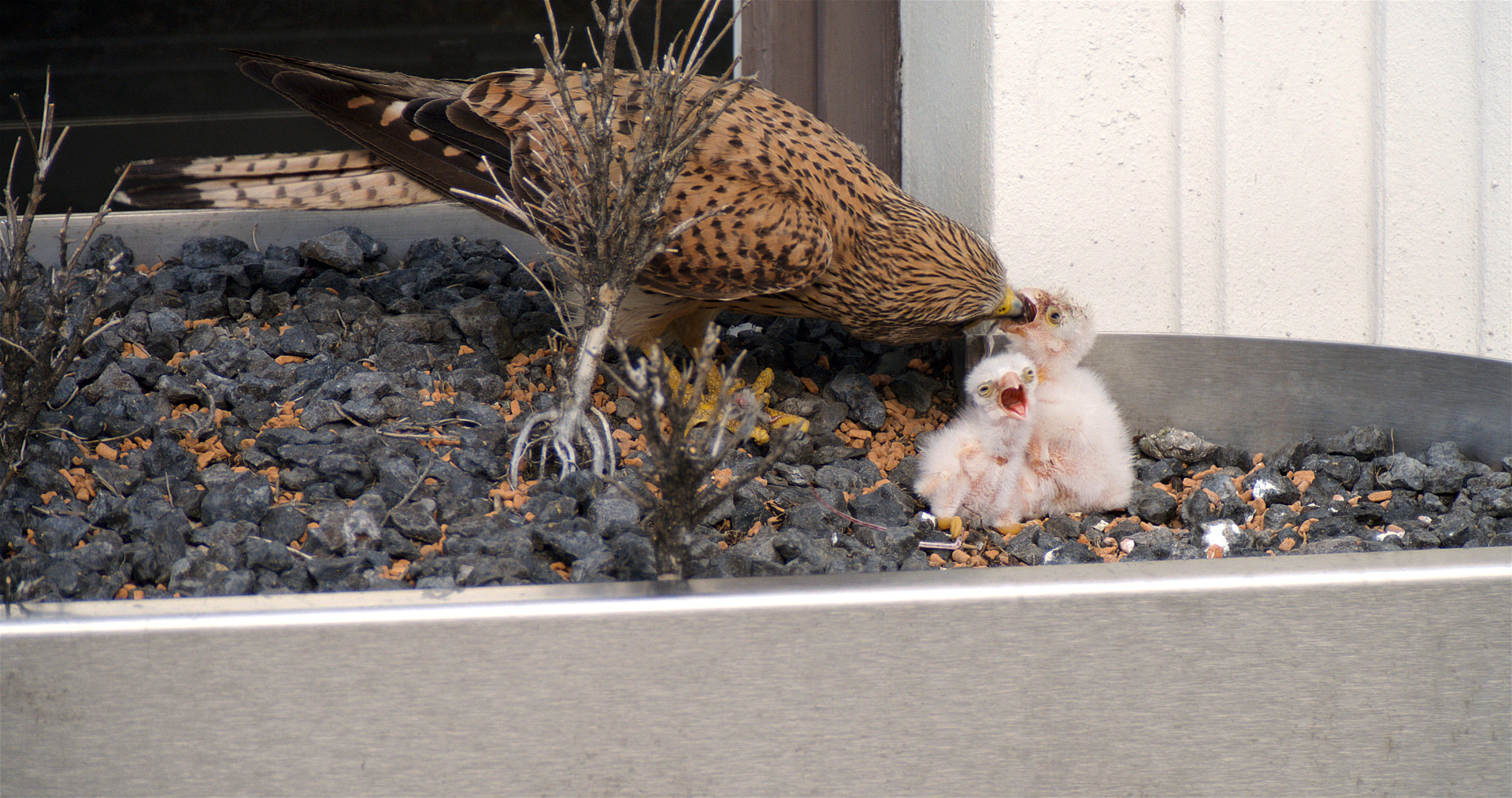

Did these broods develop their own dramatic storylines?
Mario Kreuzer: Yes, there were nine eggs in total between the two broods, six chicks hatched, and only three of them survived. That’s completely normal in nature, but it's very exciting to see how it all happens, which chicks survive or not, or which eggs are lost. There’s no need for amazing drone footage or the like – I’m more interested in the emotions.
How long have you been making wildlife films with digiscoping equipment?
Mario Kreuzer: I’ve been working this way for some time. Years ago, when I was working on the production of a series of wildlife films, I switched to a camera with a large sensor and a huge lens, but I wasn’t happy with the results. The show’s host pointed me in the direction of the digiscoping equipment produced by SWAROVSKI OPTIK. It’s lightweight and it’s simply great to handle. On top of that, it is water resistant and, unlike pretty much any other lens, digiscoping equipment does not need to be treated like a fragile eggshell.
In which situations does digiscoping equipment work well and when should you turn to a traditional lens?
Mario Kreuzer: Basically, you can film anything from dawn to dusk with digiscoping. There’s really nothing like it. Lenses that come close to the smallest magnification range of the spotting scope cost many times more. Even in poor lighting conditions such as heavy cloud or twilight, I’ve never had any problems. In this context, film has an advantage over still photography because it works better with short exposure times and in combination with sensitive sensors to produce bright images even with extreme magnification. I never had any reason to change to a different lens.
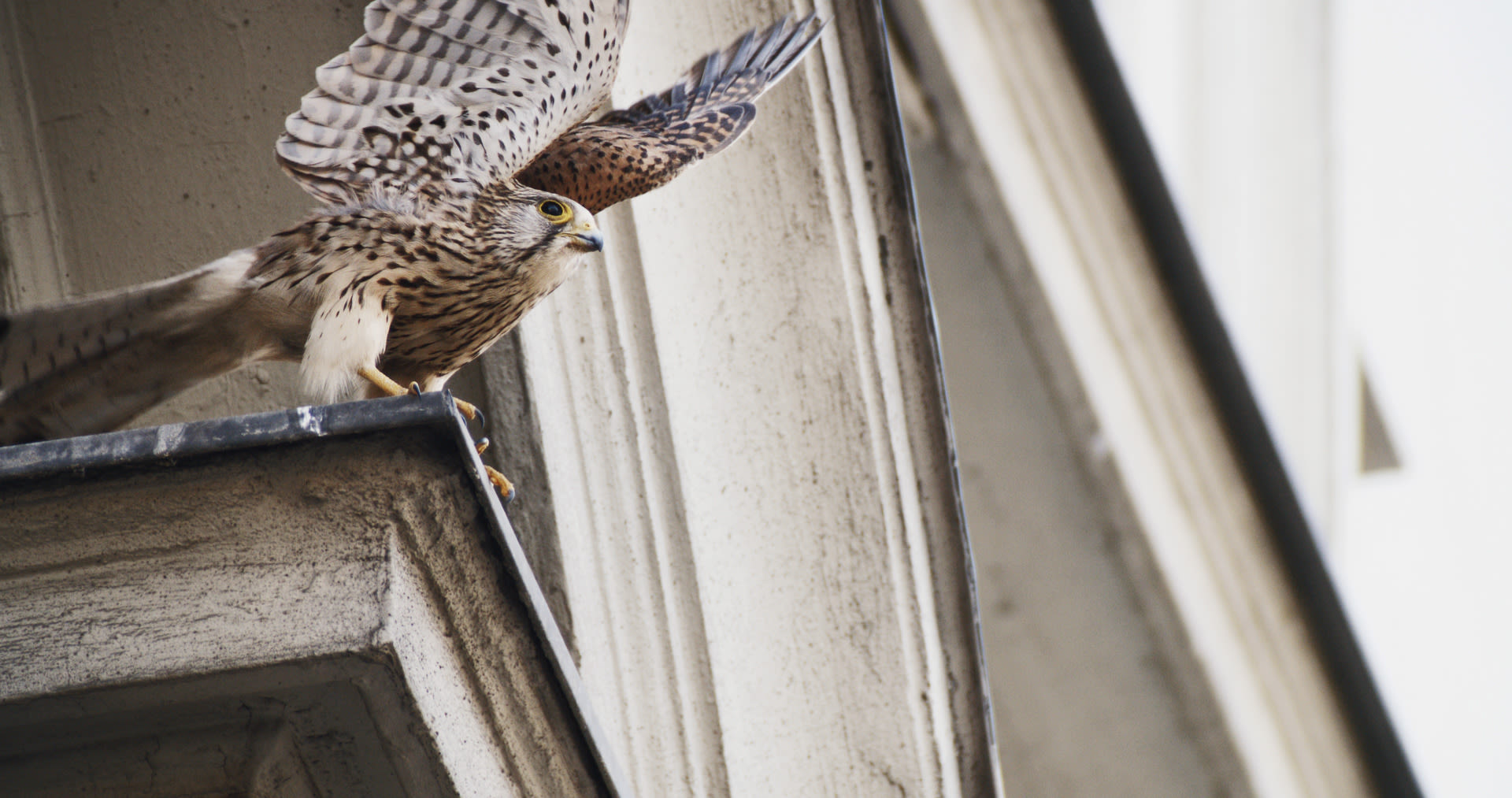
Even in rain and bad weather?
Mario Kreuzer: No problem. It’s ideal for adverse weather conditions, because the scope is water resistant. I only have to protect the camera. With the spotting scope, its relatively small diameter also means that there is a smaller area to be affected by the wind.
Can you also take macro images with digiscoping equipment?
Mario Kreuzer: It was a real advantage to us that we could take macro film from a great distance. This meant that we could observe the birds’ behavior without disturbing them, and that was crucial to me. The story we tell of the two breeding pairs is exactly how it actually happened, no matter how unexpected and hard that may seem. But to show that we did need to film specific scenes, and we managed that very well with the digiscoping equipment.
Where will your future film projects take you?
Mario Kreuzer: You don’t always need to travel to far-flung places to find interesting subjects. I believe there is much to discover right on our own doorsteps. And if the audience experiences something that they have never seen before, that’s the greatest praise I can think of.
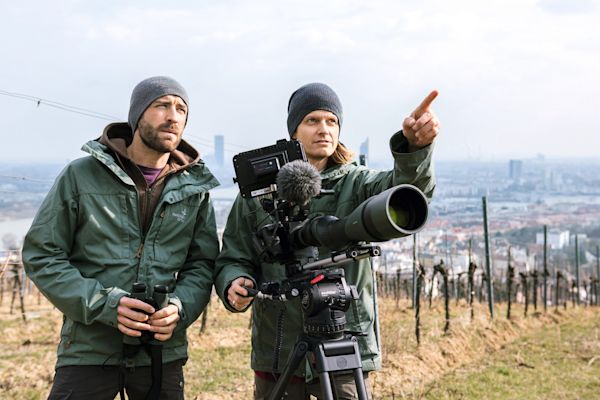
Turmfalken – Unsichtbare Nachbarn
The documentary "Turmfalken – Unsichtbare Nachbarn" [Kestrels at Close Quarters] by Mario Kreuzer and Leander Khil saw its German-language TV premiere in winter 2017/2018 as part of Austrian broadcaster ORF’s “Universum” science season. The film was also shown on international TV and at wildlife film festivals.
Leander Khil (left) and Mario Kreuzer (right) filming their documentary Turmfalken – Unsichtbare Nachbarn [Kestrels at Close Quarters] in Vienna
Visit www.pkmfilm.com for more information and dates.
Mario Kreuzer, born in Klagenfurt, has worked as a wildlife and sports filmmaker for 25 years. He has produced portraits of ski jumpers such as Thomas Morgenstern and shot for wildlife magazine Wildes Land. He captures footage using the STX 95 and STX 65 from SWAROVSKI OPTIK.
Leander Khil is an ornithologist, photographer, and bird watcher. He is also an author, speaker, and a member of the Avifaunistic Committee of BirdLife Austria. His current work can be found on his website, www.leanderkhil.com.
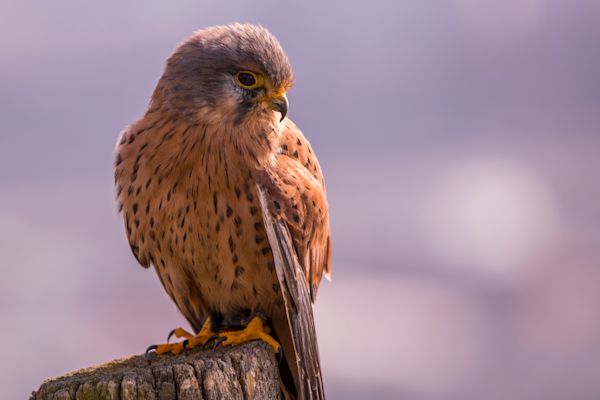
(Falco tinnunculus)
The Common Kestrel
is one of the most widespread species of falcon. European populations alone are estimated at around one million. It loves high nest sites; in urban areas these include church towers and the abandoned nests of other bird species in trees, while in the mountains it prefers cliff ledges.



